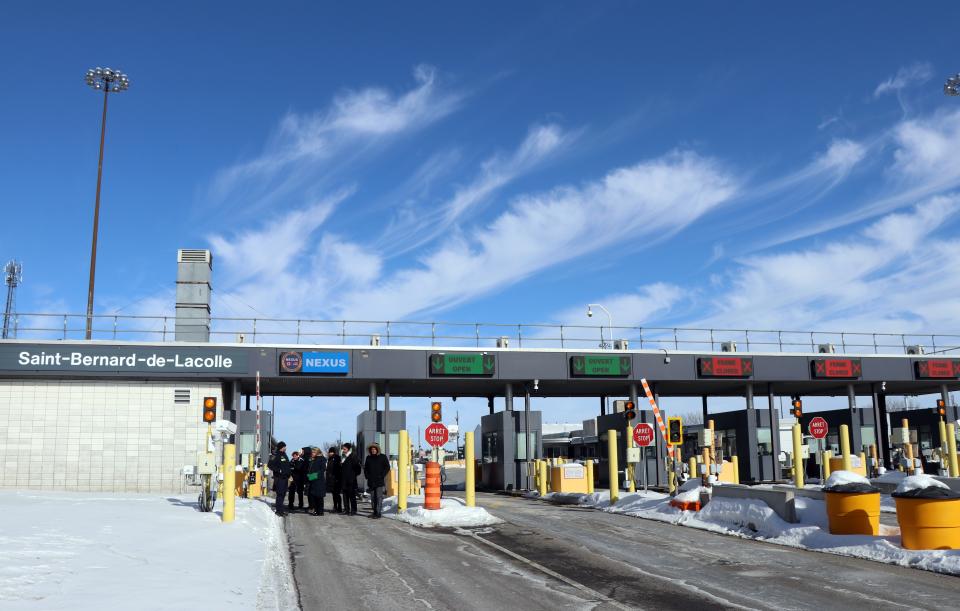The debate surrounding illegal border crossings into the U.S. often centers around the need for increased border security. While border security is undeniably important for maintaining national sovereignty and safety, there are also compelling arguments for balancing enforcement with compassion for vulnerable migrants. This balance is crucial for crafting an immigration policy that is both effective and humane.
1. The Need for Strong Border Security
The United States shares a long and porous border with Mexico, which is often seen as the focal point for illegal immigration into the country. Over the years, efforts to secure the border have intensified, with the construction of physical barriers, deployment of surveillance technologies, and increased staffing of Border Patrol agents. These efforts are driven by concerns over illegal immigration, drug trafficking, and potential threats to national security.
Border security is essential to maintaining the integrity of the U.S. immigration system. For proponents of stronger border enforcement, ensuring that those who enter the U.S. do so legally is a fundamental aspect of protecting the country’s sovereignty. Strengthening border security, they argue, is a necessary step in addressing illegal immigration and preventing potential security threats.
2. The Humanitarian Imperative
However, while national security is a valid concern, there are significant humanitarian considerations that must also be taken into account. Many individuals who cross the border illegally do so out of desperation, fleeing violence, poverty, or political instability in their home countries. For these individuals, the U.S. represents a beacon of hope and opportunity.
As such, a purely enforcement-based approach to immigration often fails to consider the complex reasons behind migration. Many of those attempting to cross the border illegally may be fleeing gang violence, domestic abuse, or political persecution—factors that necessitate a more compassionate response.
The U.S. has a long history of providing asylum to those facing persecution, and many advocates for immigrants argue that the asylum process should be streamlined to ensure that those who are in genuine need of protection have access to it. However, the current backlog of asylum cases and the inability of many migrants to navigate the complex system often leaves them vulnerable to detention, deportation, or exploitation.
3. Technological Solutions and Surveillance
While physical barriers like walls and fences are highly visible symbols of border enforcement, they are not the only solution to securing the U.S. border. In recent years, advances in technology have created opportunities for more efficient and less intrusive methods of border enforcement. Drones, sensors, and facial recognition software can be used to monitor border regions and detect illegal crossings in real time.
These technologies can complement physical barriers, allowing authorities to focus enforcement efforts where they are most needed. By combining advanced surveillance with a more targeted approach to border security, the U.S. can reduce the number of illegal border crossings while minimizing the negative impact on vulnerable populations.
4. The Need for Comprehensive Immigration Reform
While strengthening border security is an important element of any immigration strategy, it cannot be the sole focus. Comprehensive immigration reform is needed to address the underlying causes of illegal immigration, streamline the legal immigration process, and provide legal pathways for those who wish to enter the U.S.
Reform efforts should include protections for asylum seekers, faster processing times, and the creation of more legal immigration channels for individuals seeking work or family reunification. Additionally, there should be a focus on addressing the root causes of migration—such as poverty, violence, and corruption—in countries of origin. This would reduce the pressure on individuals to risk their lives by crossing the border illegally.
5. Conclusion
The challenge of balancing border security with compassion is not easily solved, but it is a necessary task for any comprehensive immigration policy. Strengthening border enforcement is important, but it must be done in a way that respects human rights and provides fair opportunities for asylum seekers. Only through a balanced approach will the U.S. be able to address illegal immigration in a manner that upholds its values while protecting its citizens.





